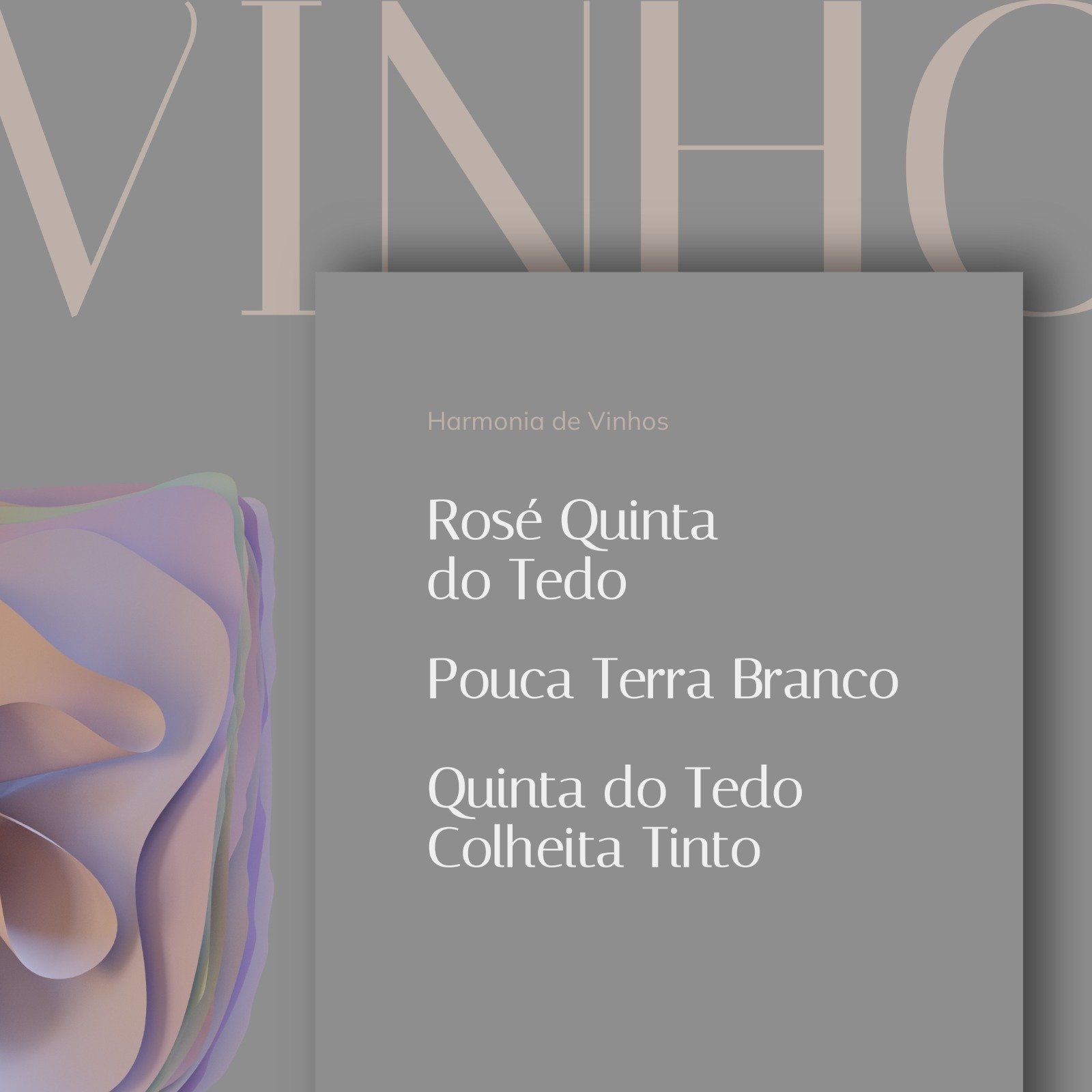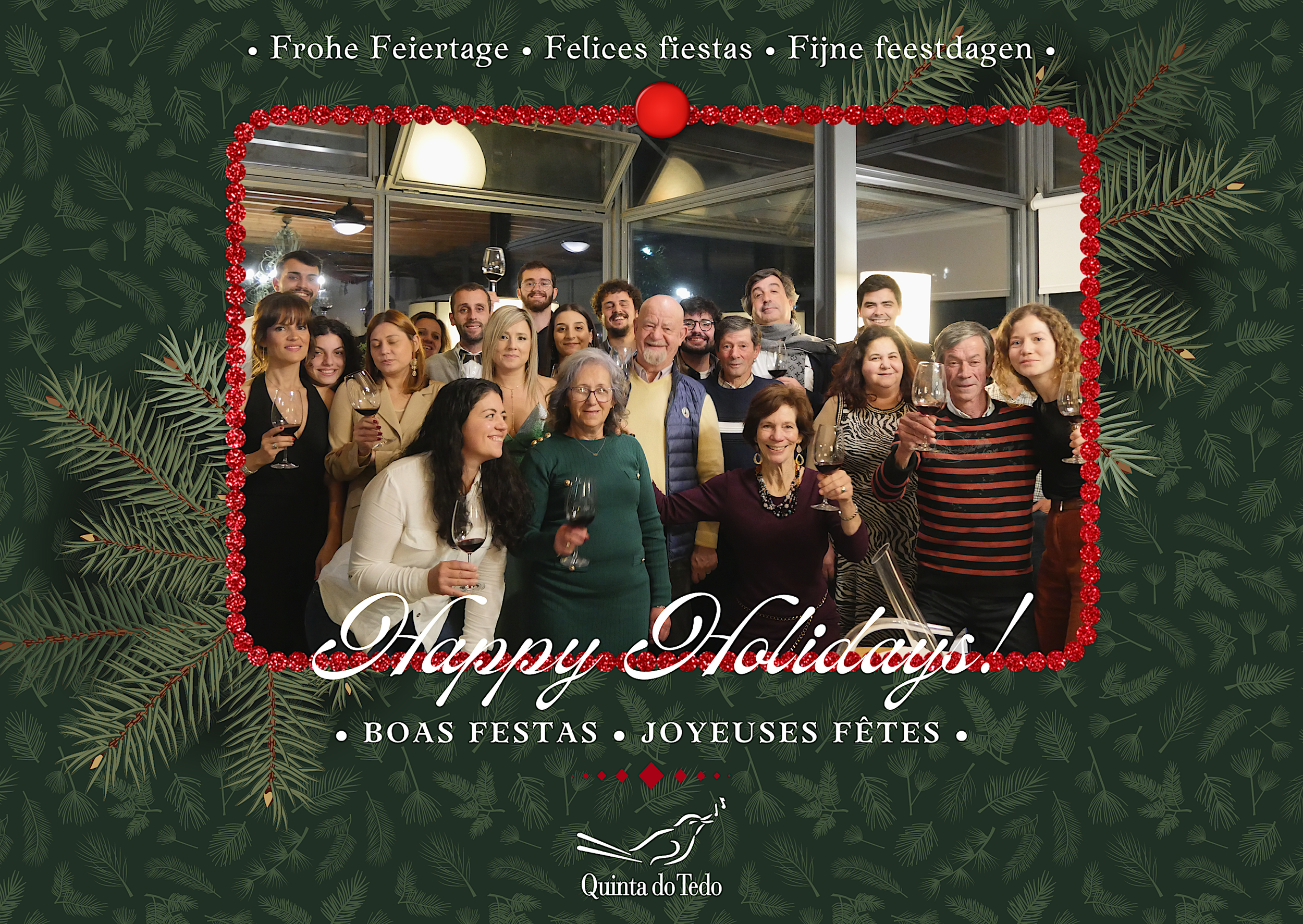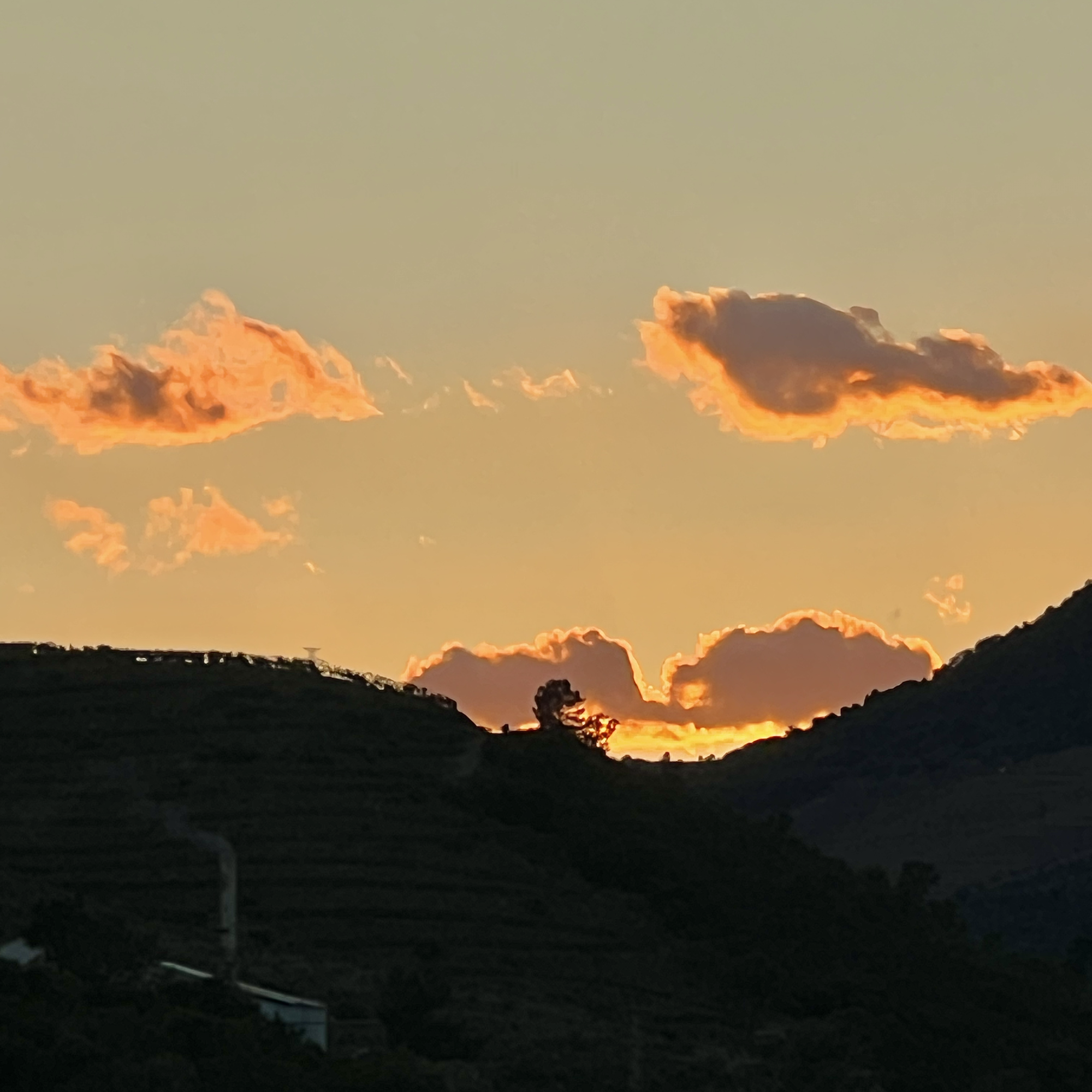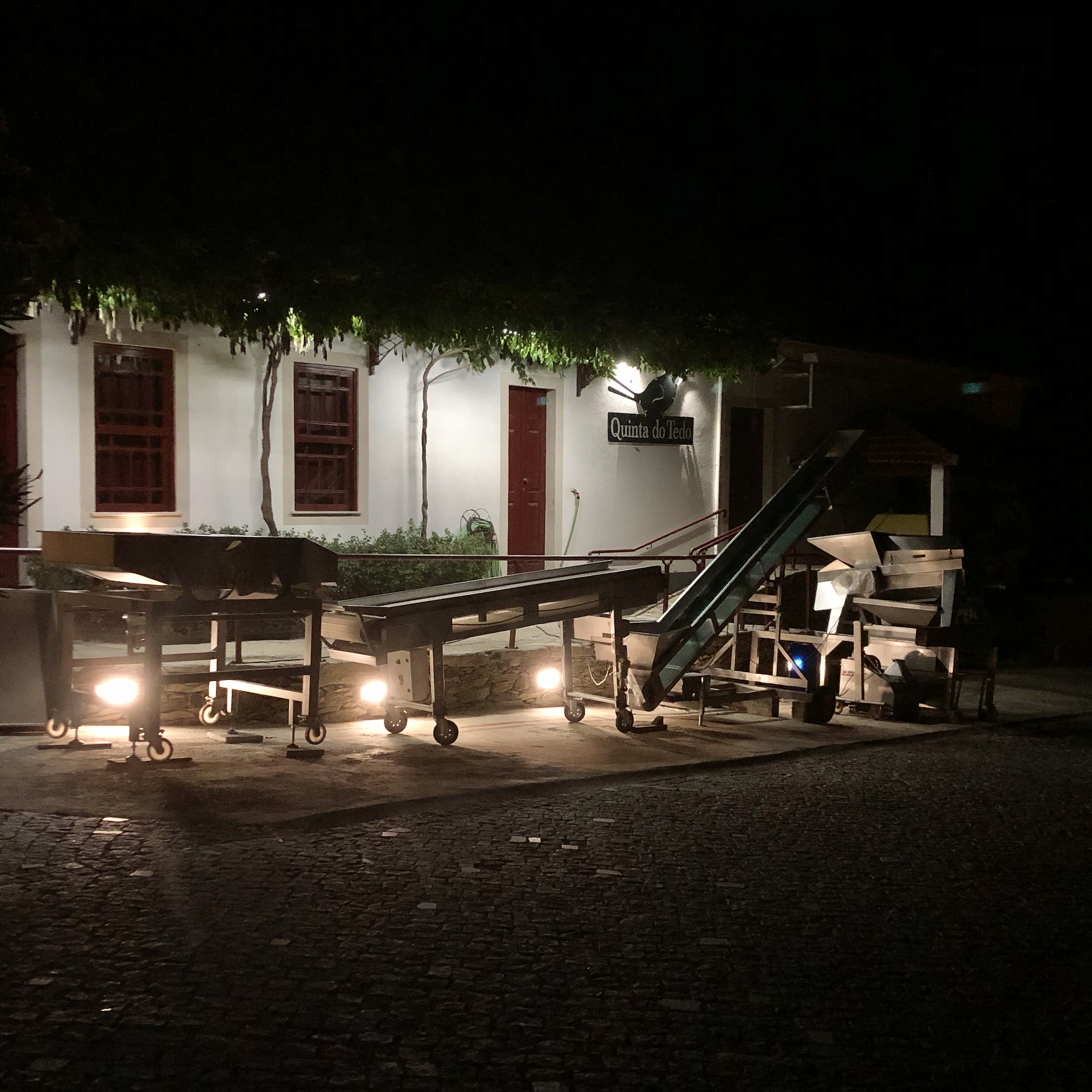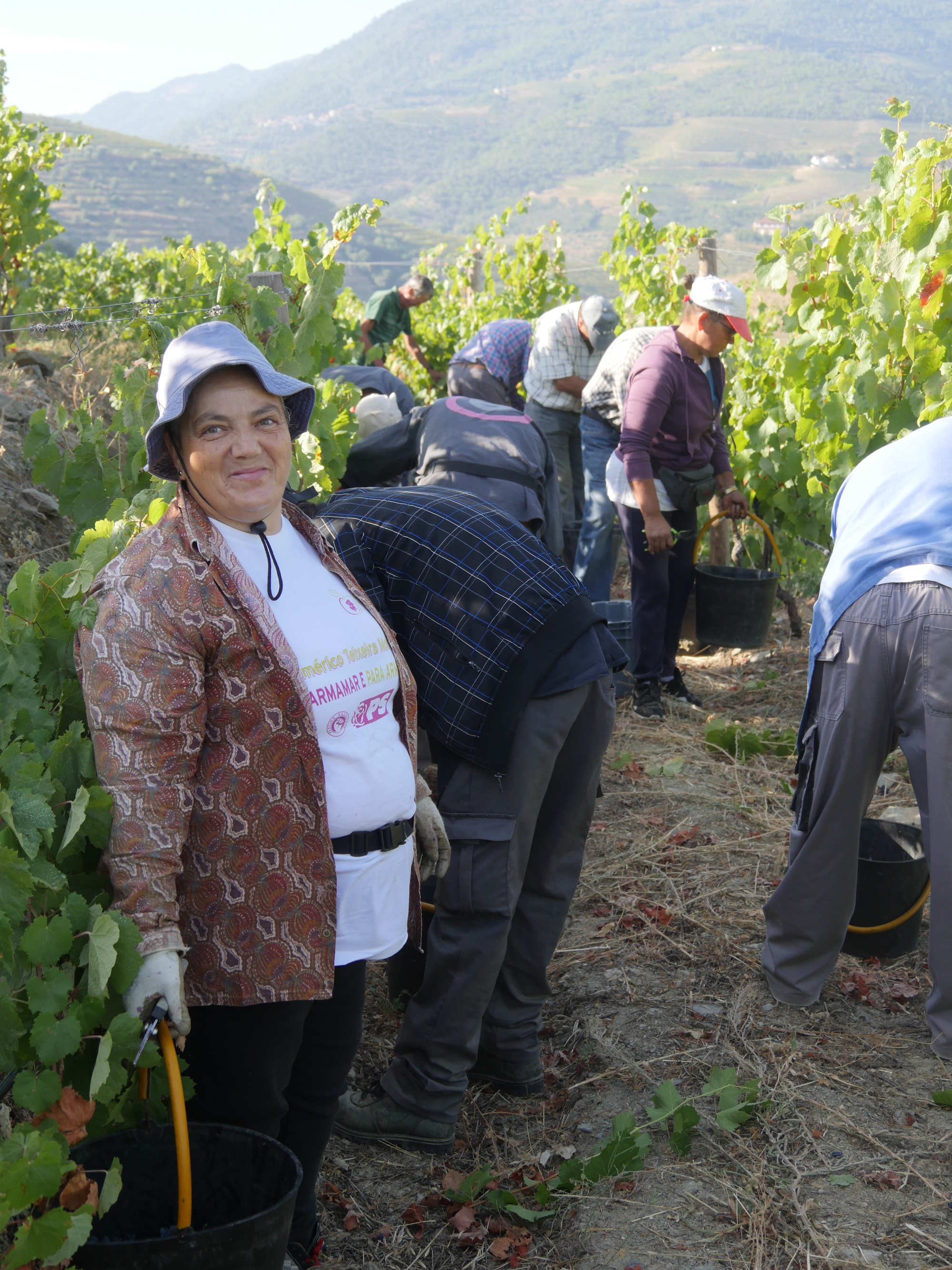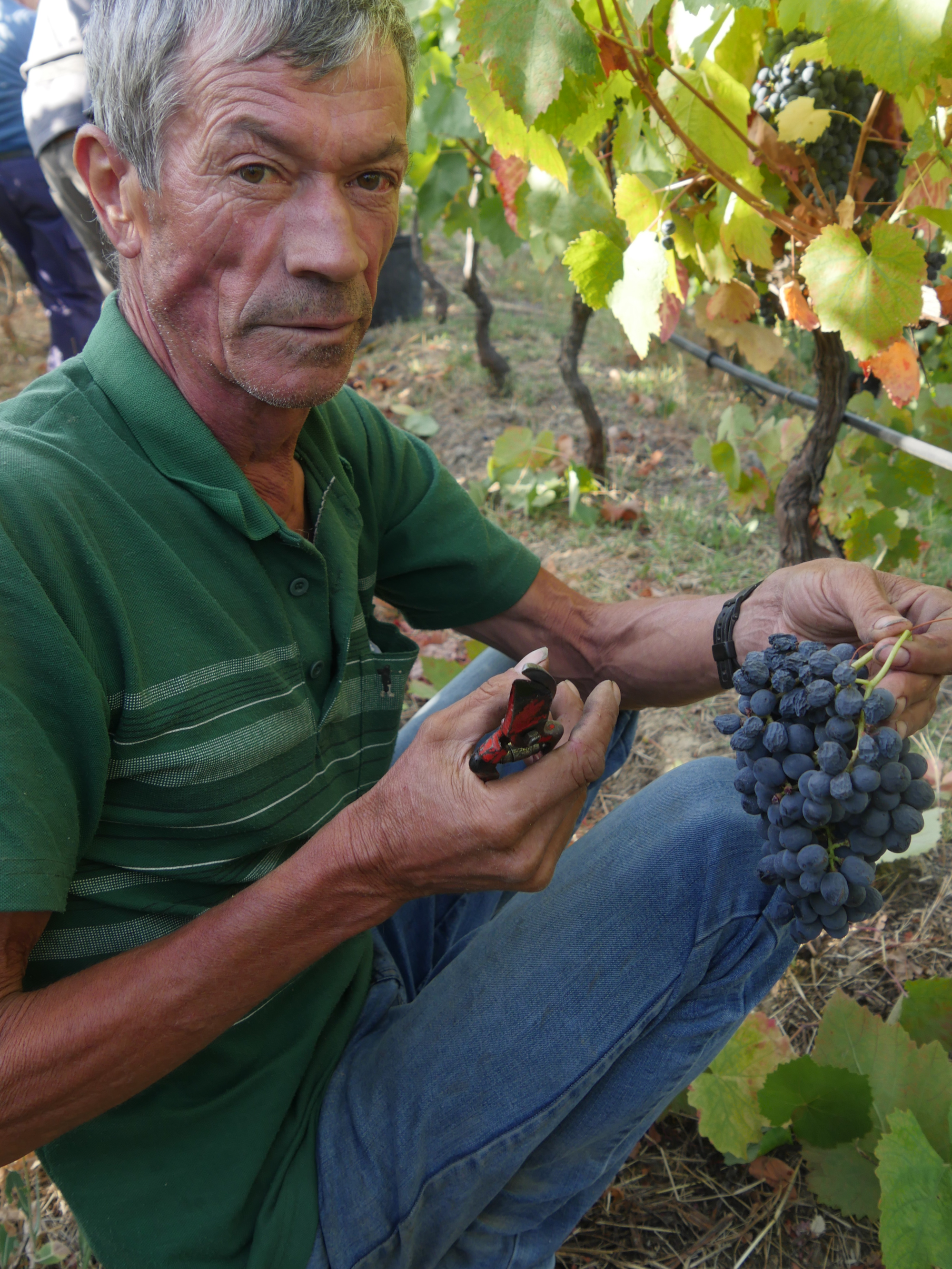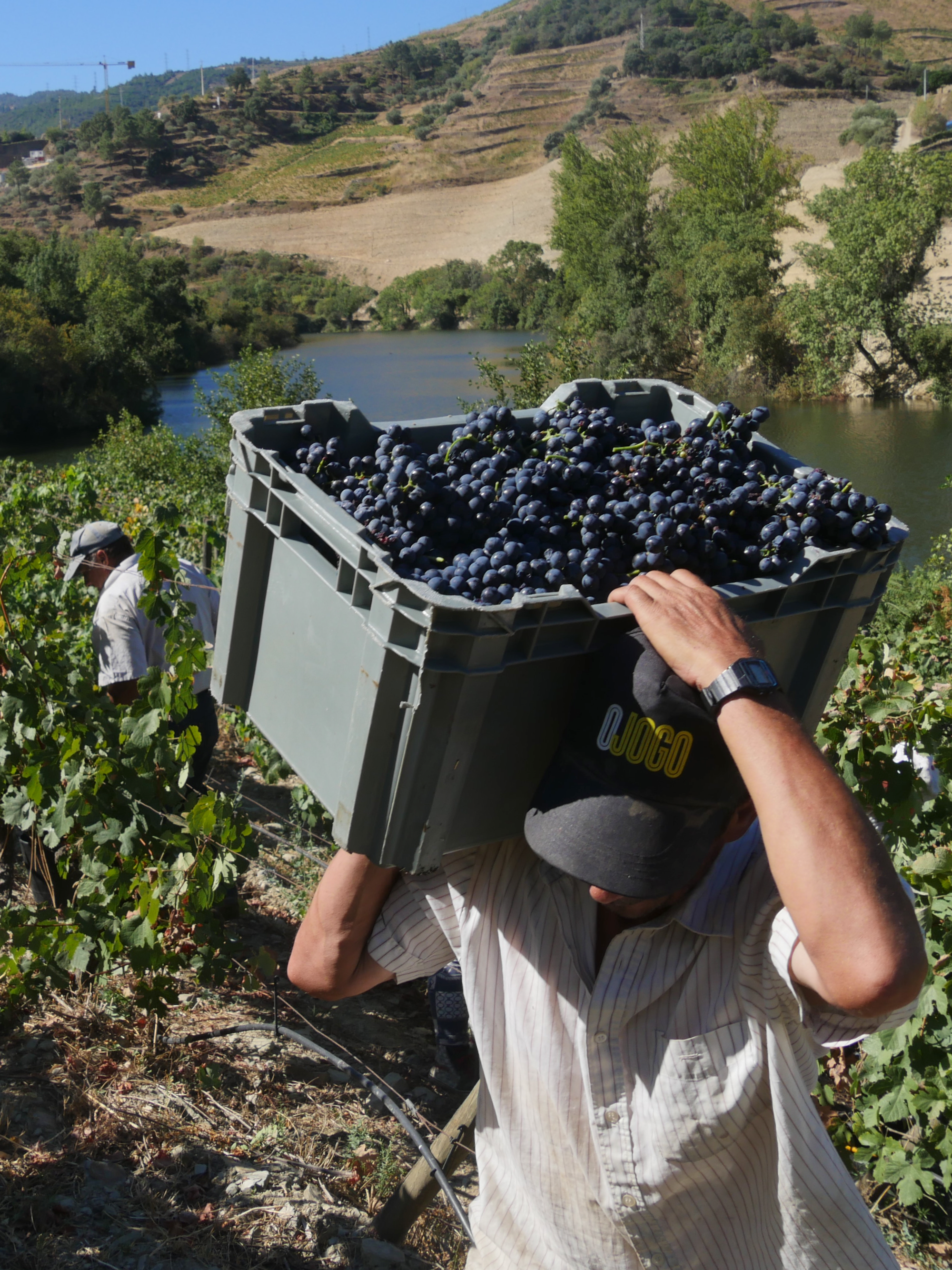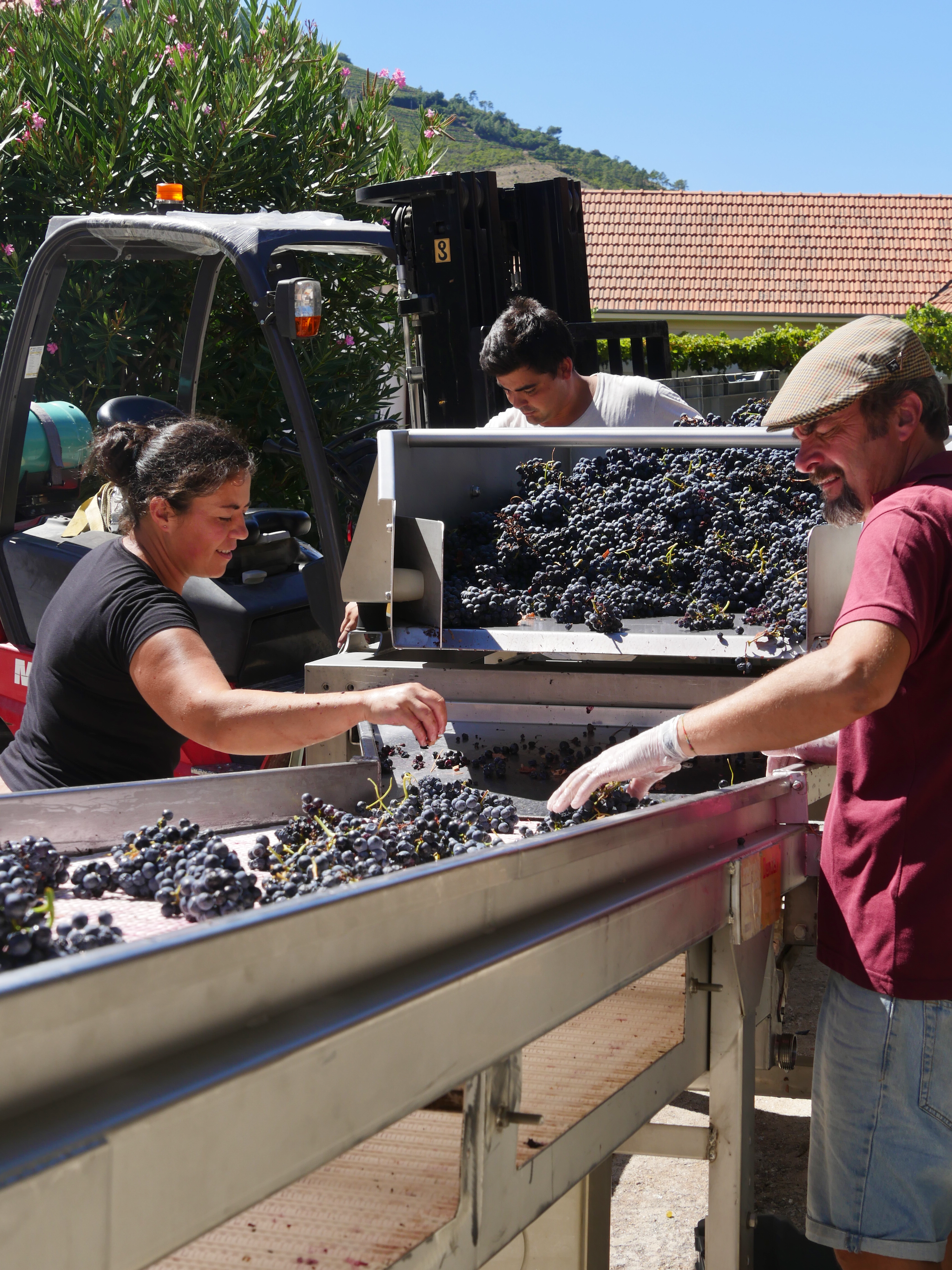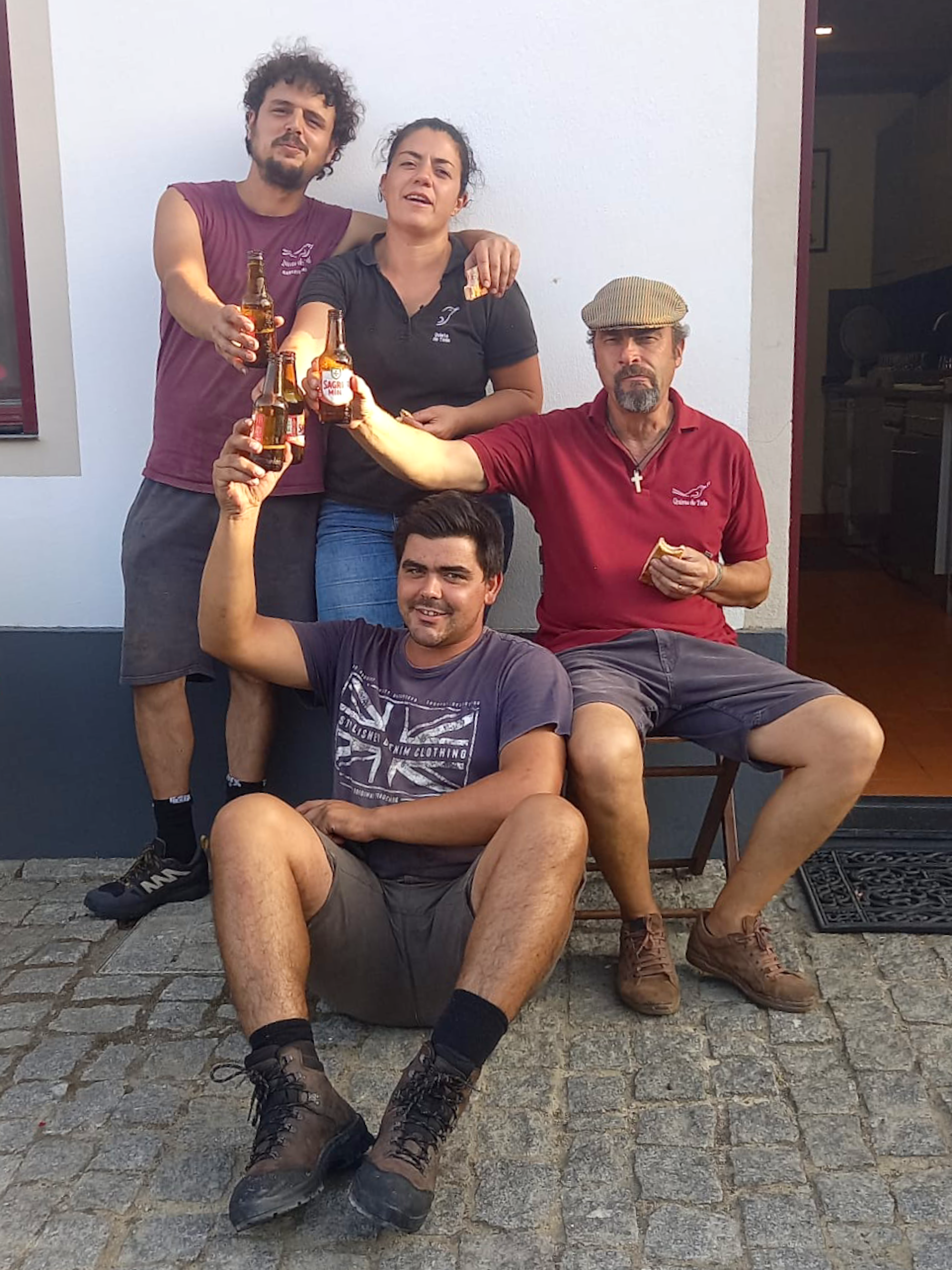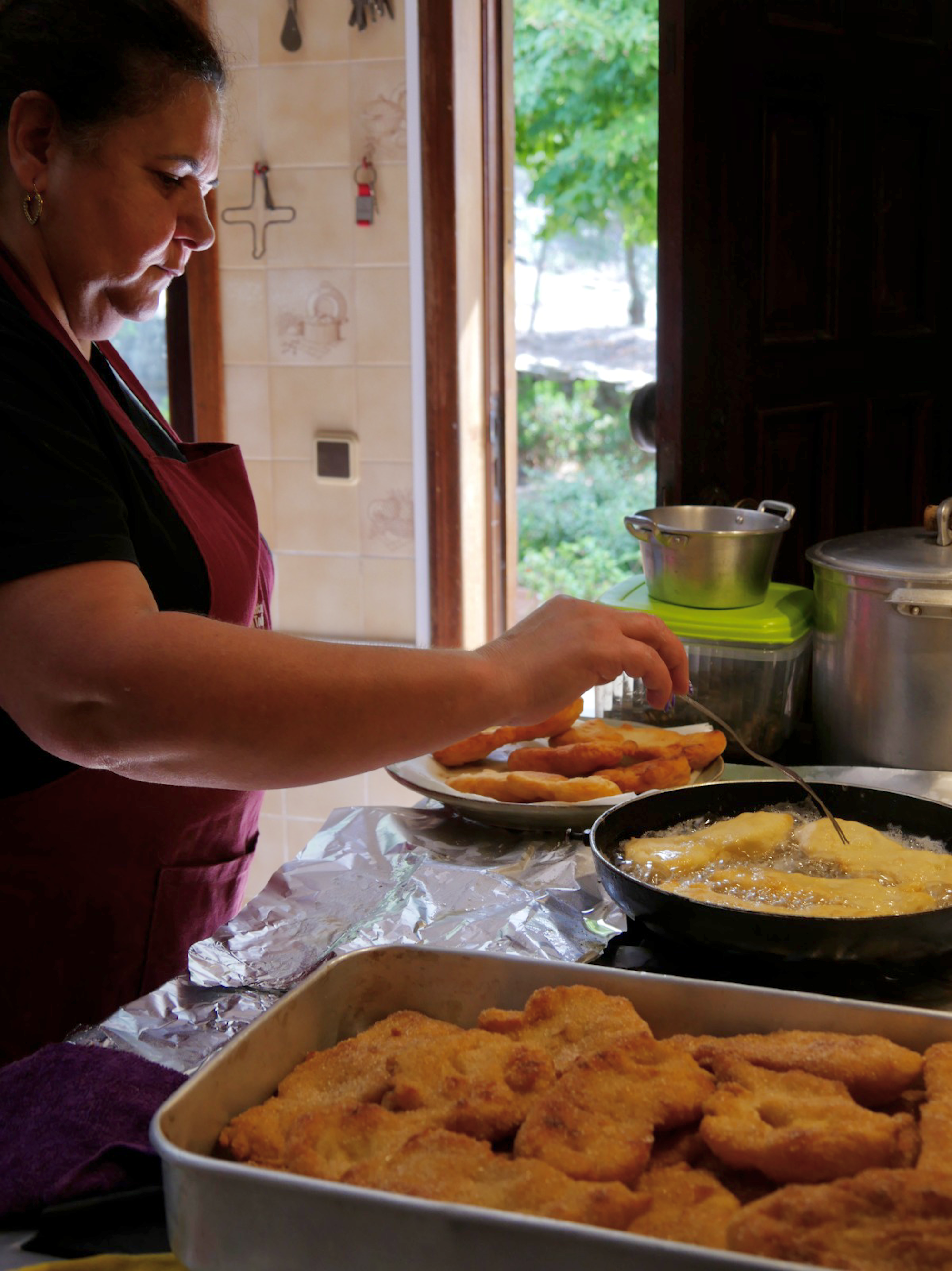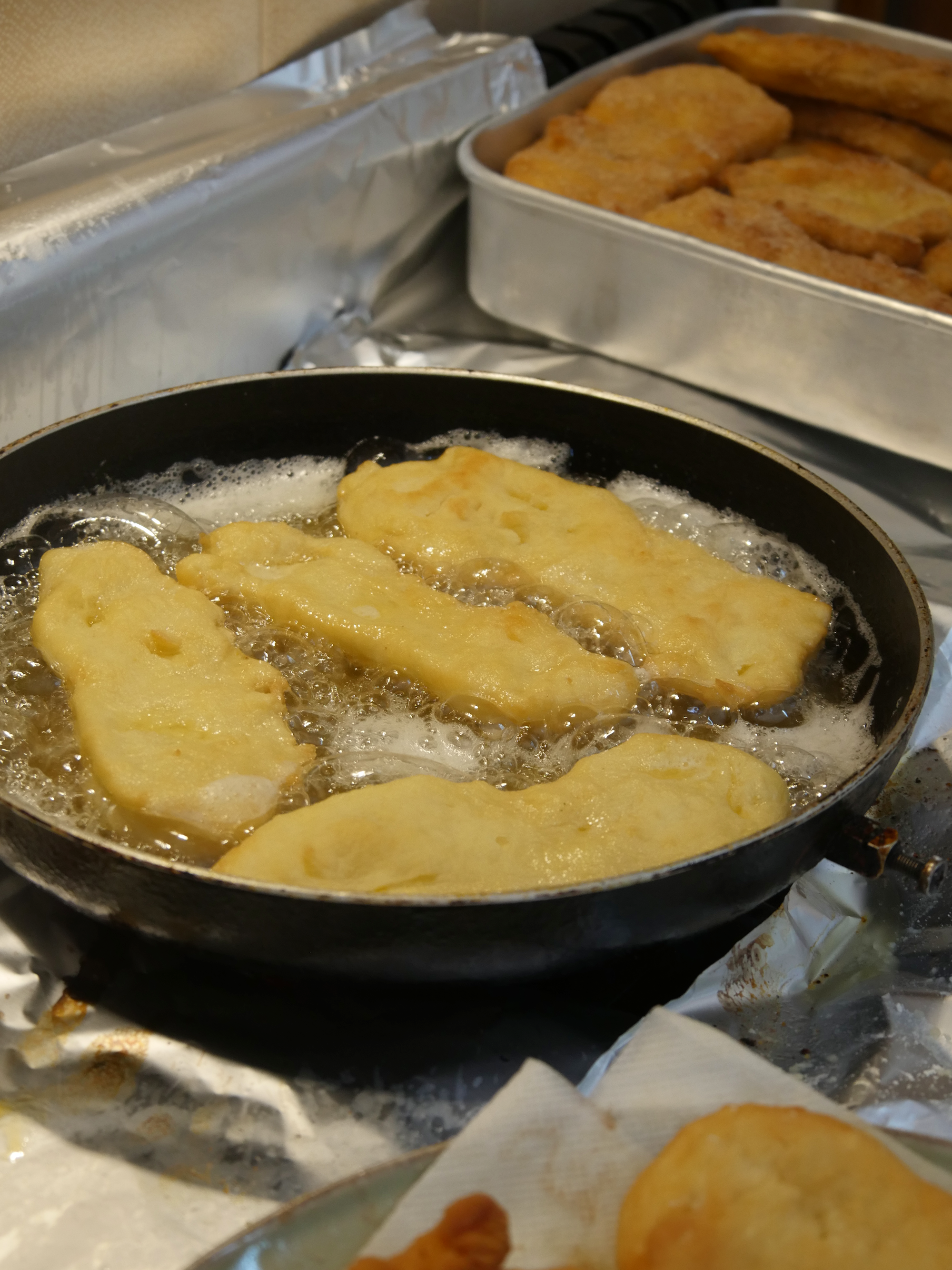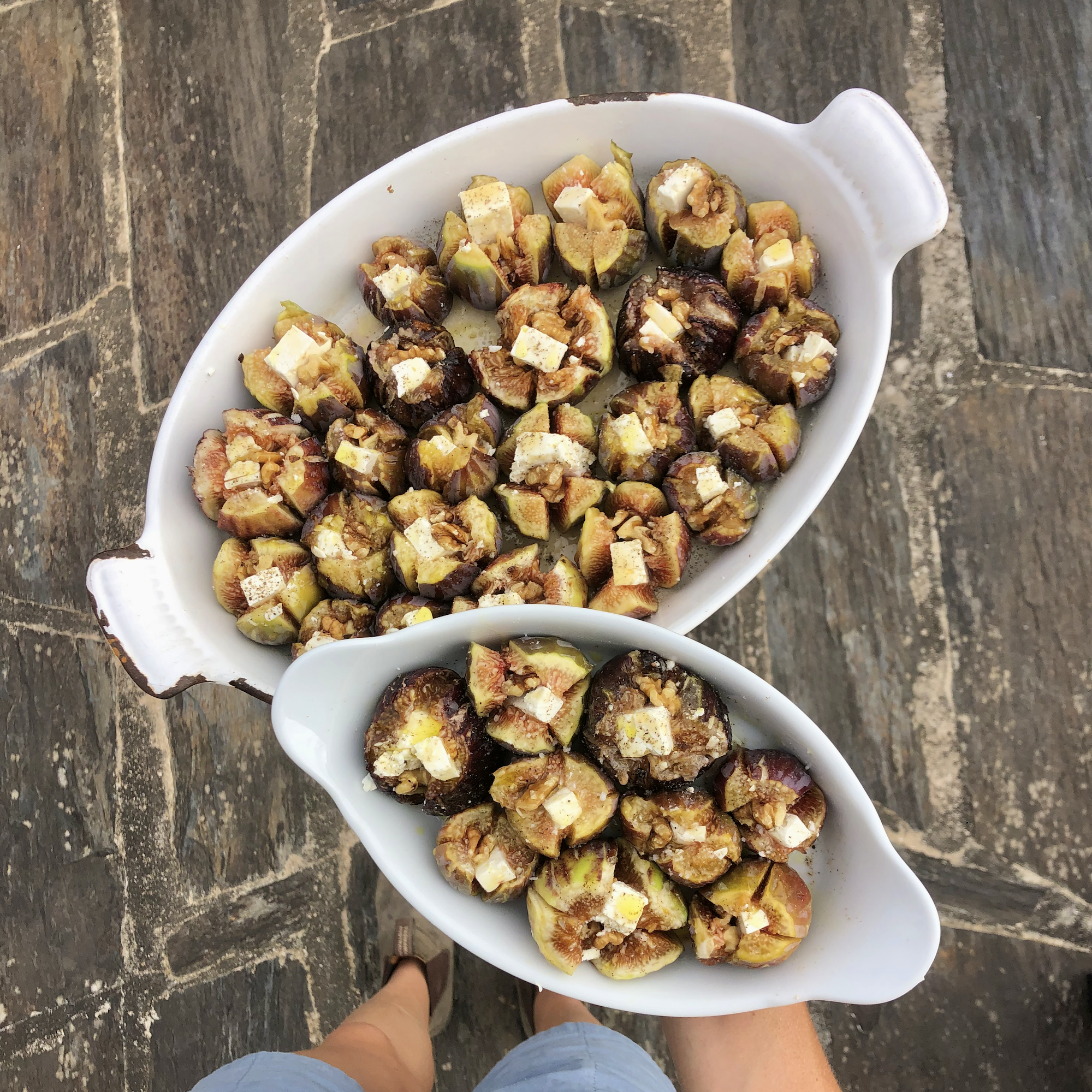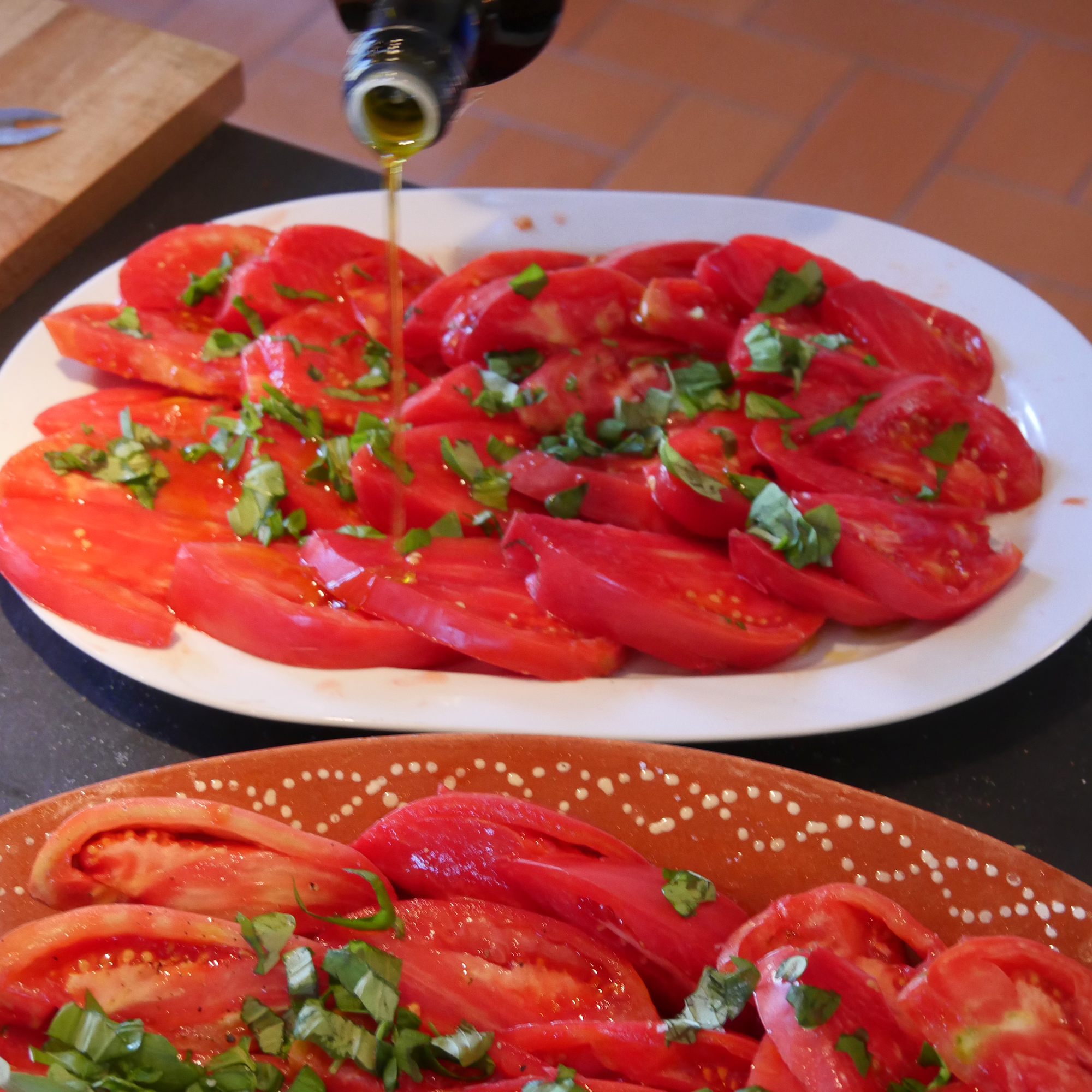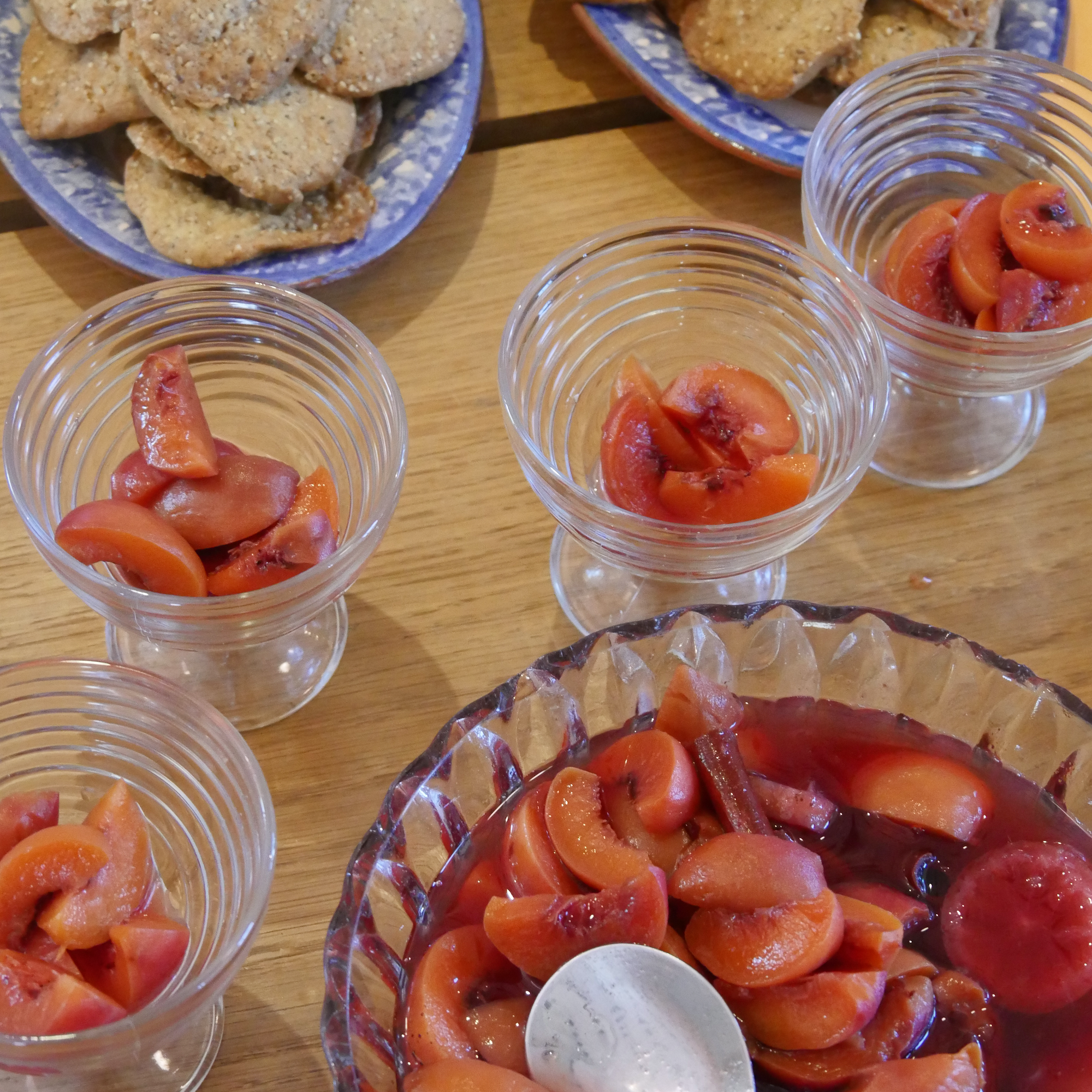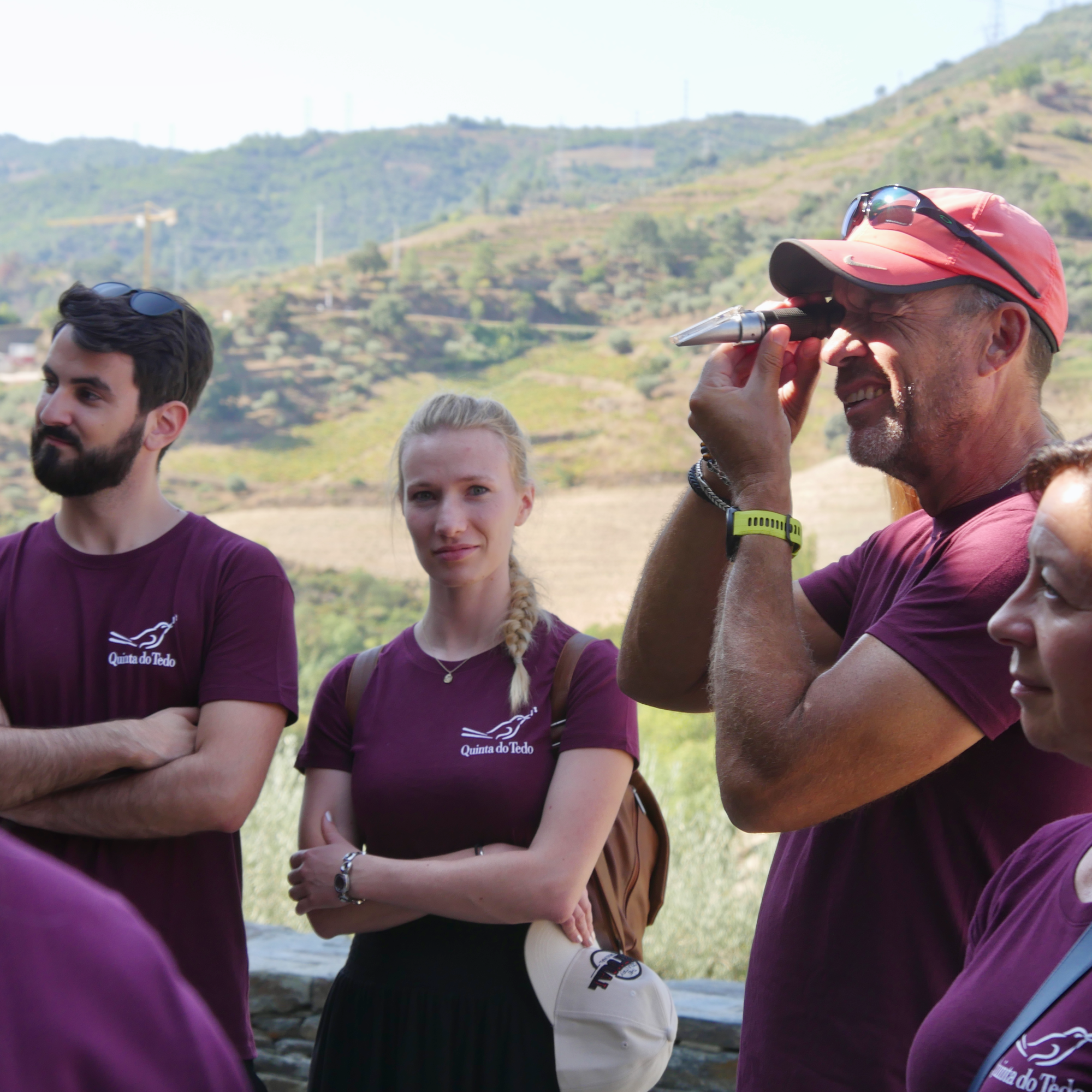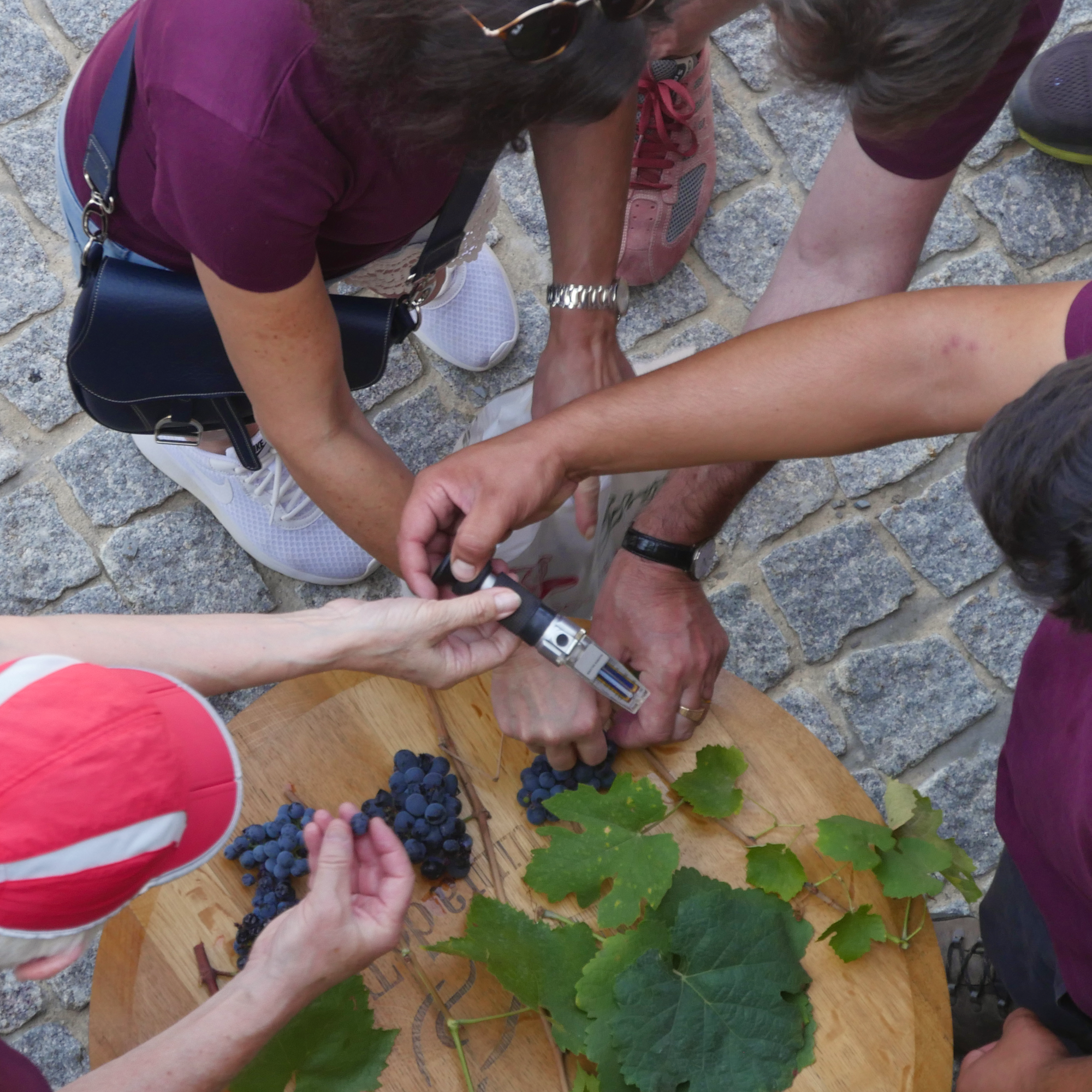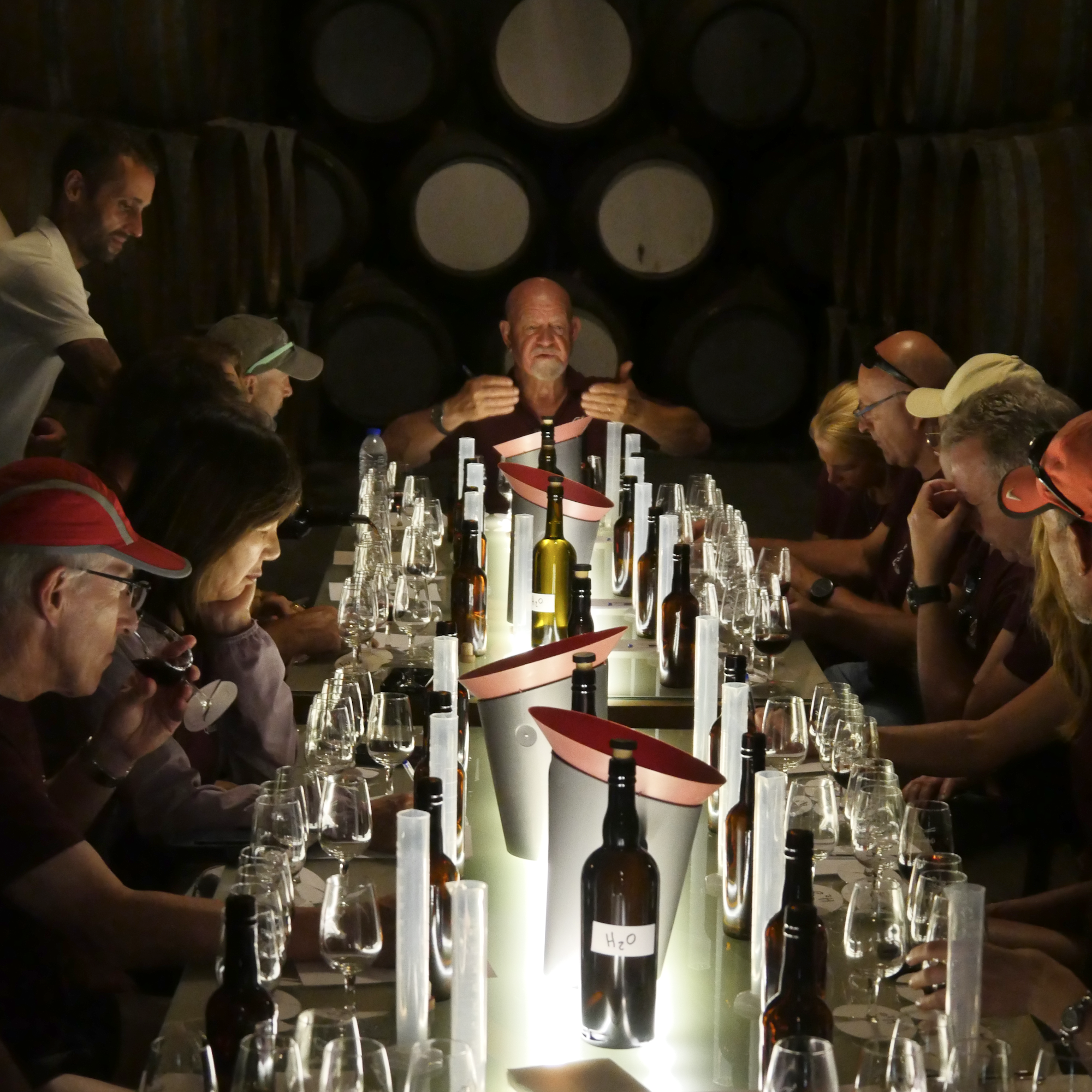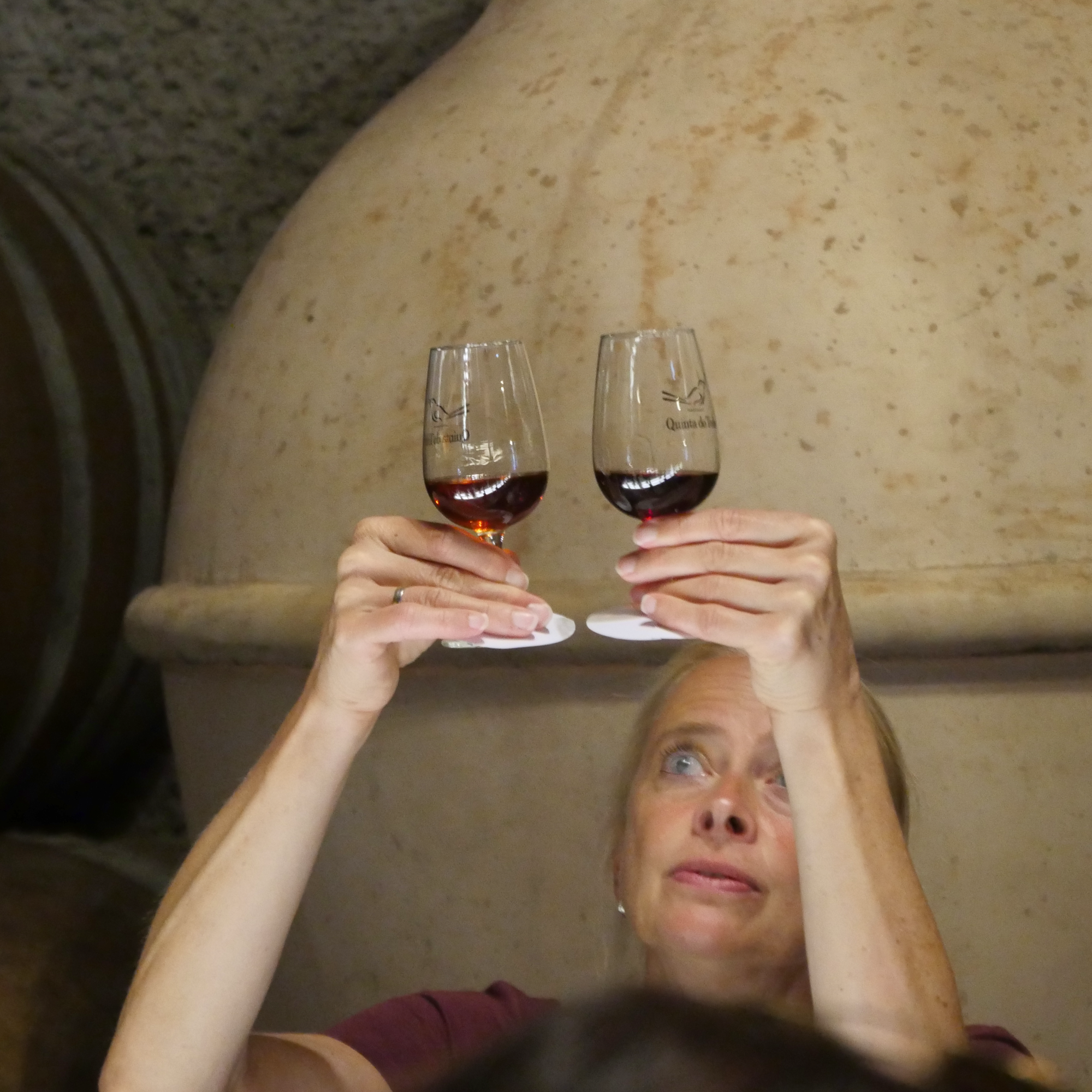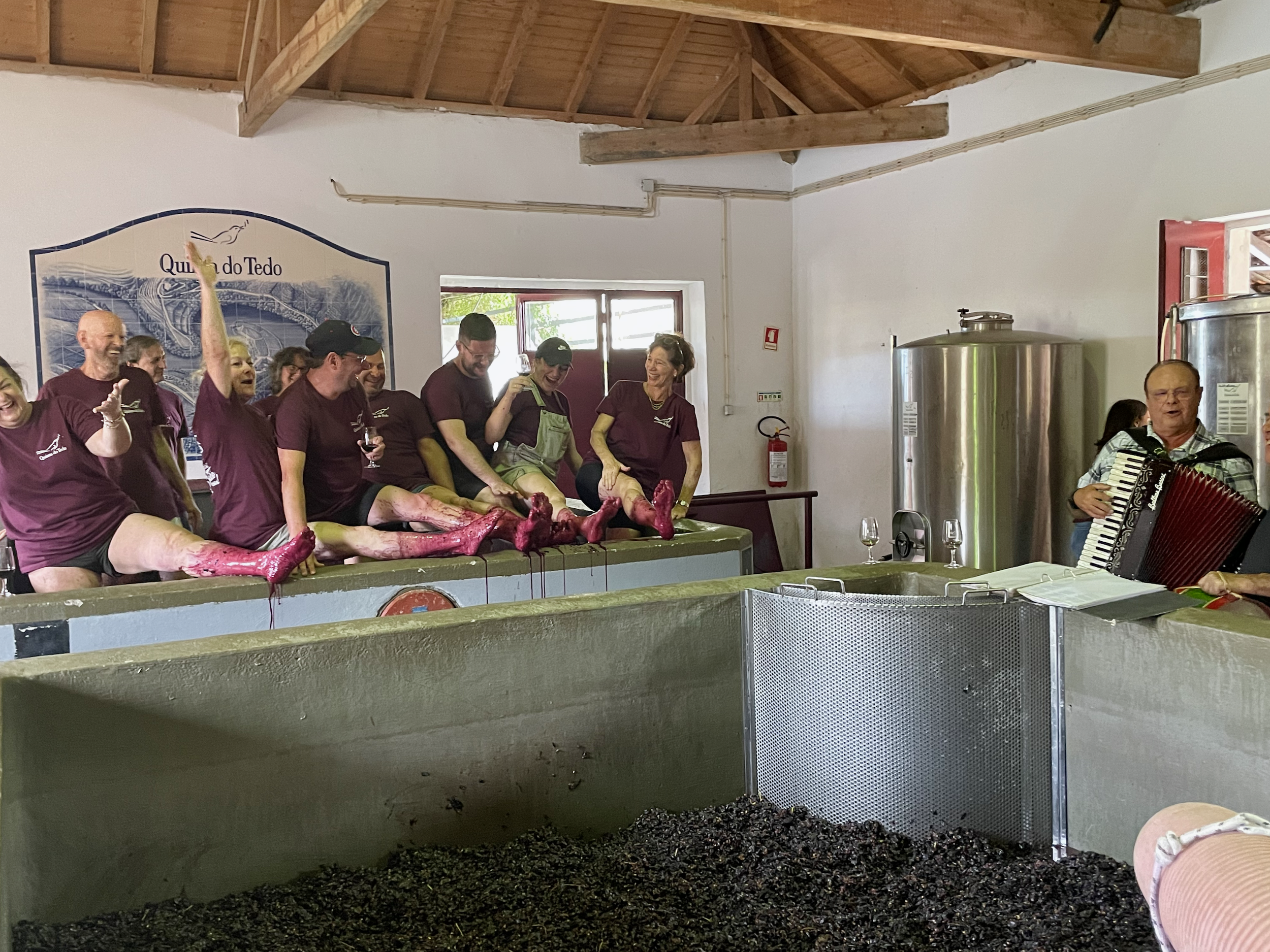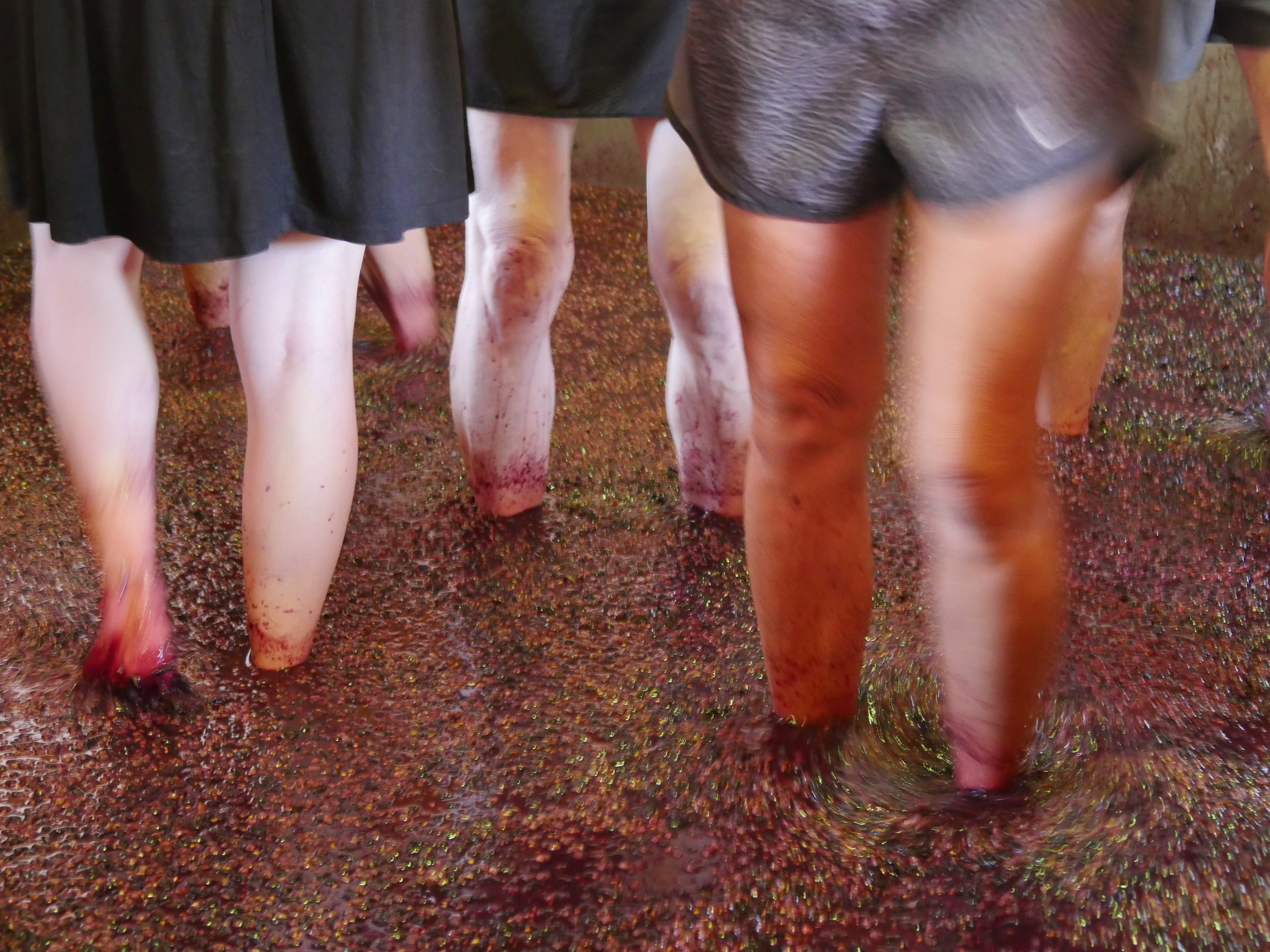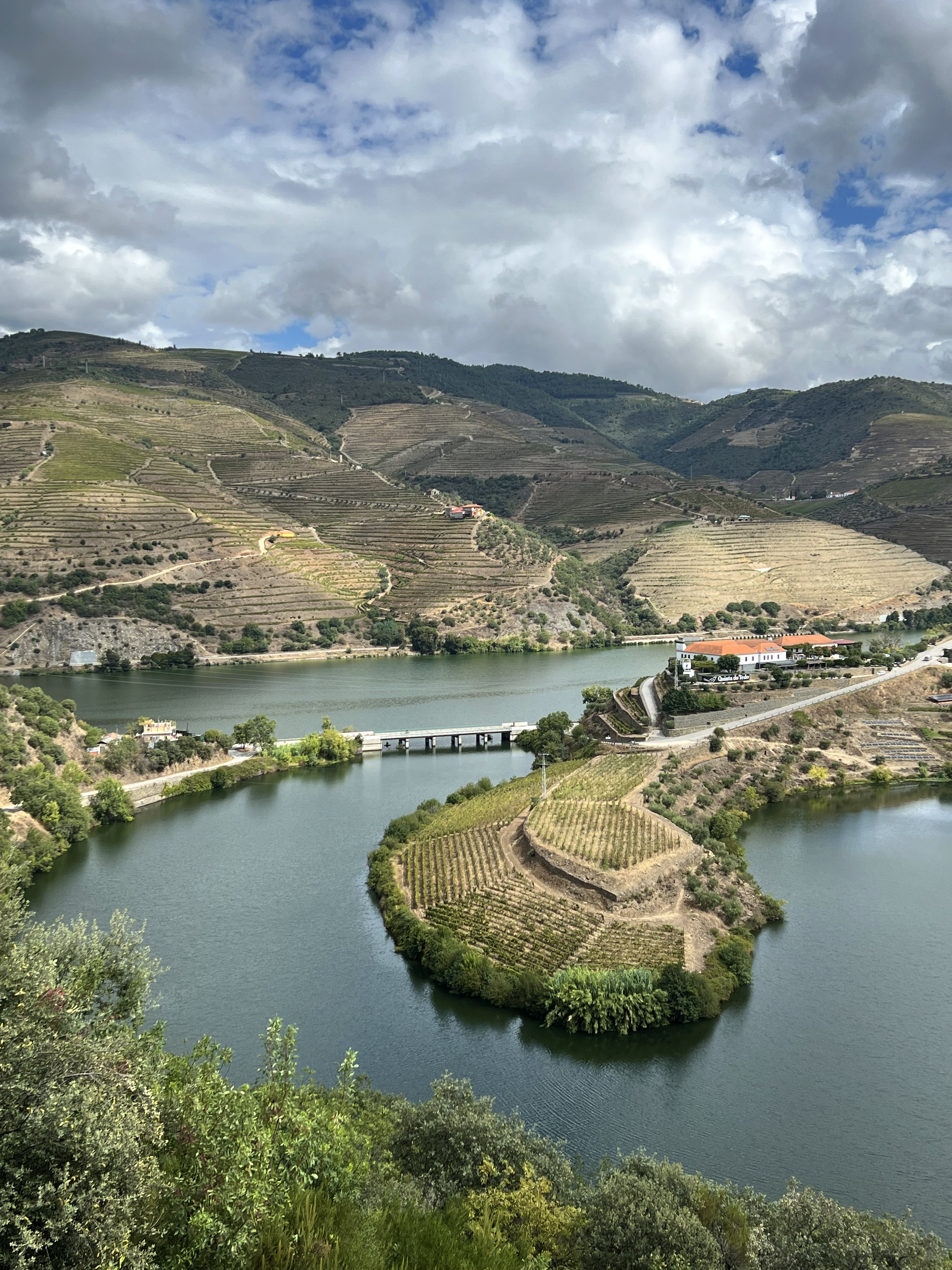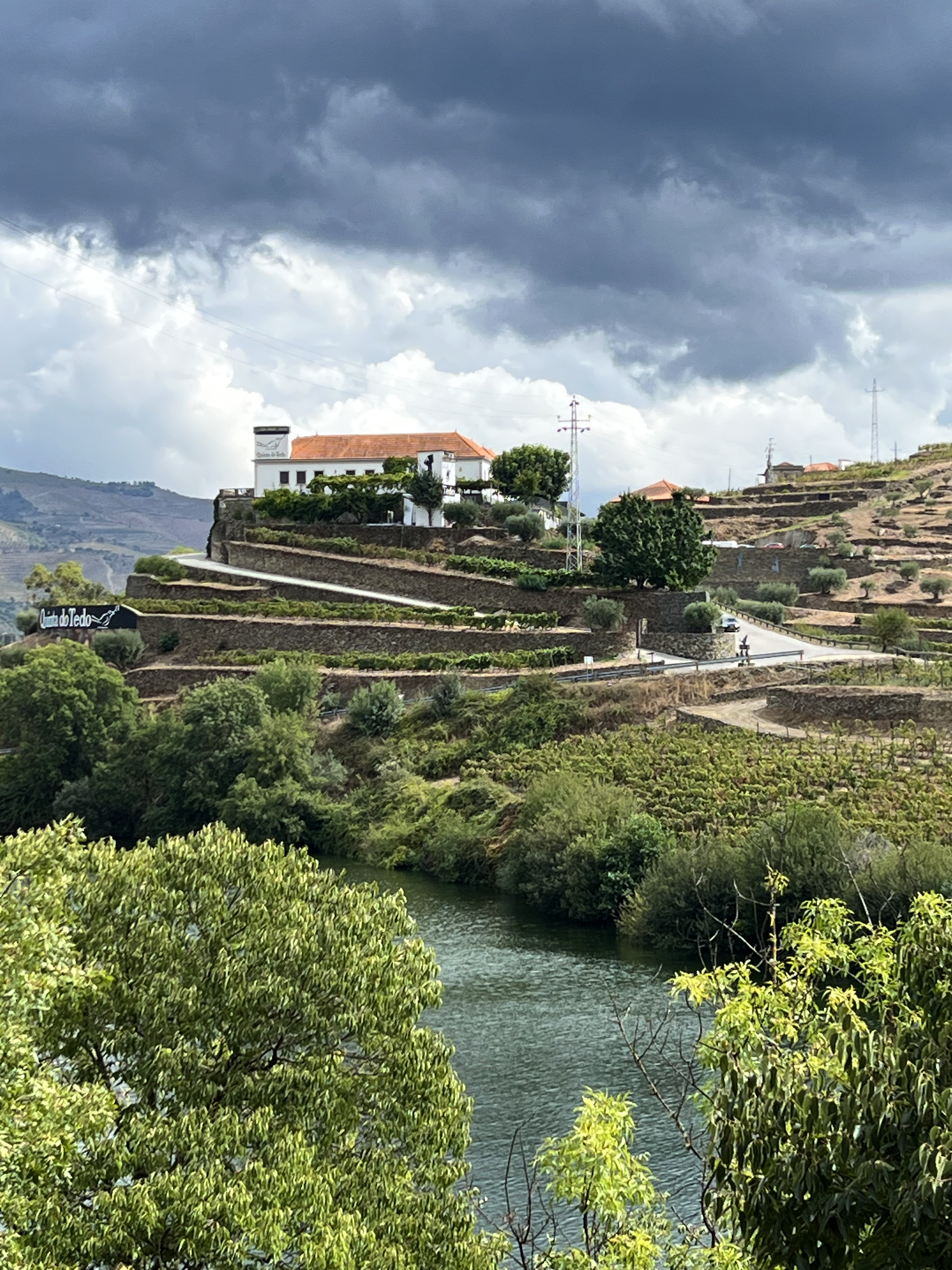In an ideal year, from our 14 ha of certified organic (since 2010) and classified grade A vineyards, we could produce 300-350 hL of must to vinify into red and rosé Quinta do Tedo estate Ports and Douro DOC wines (we do not grow, nor buy white grapes).
Compared to Burgundy’s Grand Cru (35-37 hL/ha) or Bordeaux’s First Growth (45 hL/ha), Quinta do Tedo’s 20-25 hL/ha and Douro Valley’s 30 hL/ha average yields are low. Might you ask “Why?”
First off, it’s harder to maximize the number of individual vines planted per hectare of stone wall terraces or patamares on heterogeneous hillsides with 30% slopes, compared to wider and more easily mechanized flatlands. Secondly, Douro’s hot, dry mediterranean climate and low organic matter soils limit vegetative growth and fruit production. And, finally, Douro is a mecca for old vines which produce less, but arguably more concentrated, complex, and consistent quality grapes.
Small old vineyard parcels densely co-planted with 20+ local varieties are both Douro’s best kept and most vulnerable treasure, considering the lack of next generation local grape growers to care for them, and large estates buying and replanting them to grow higher yields of fewer grape varieties.
We were lucky to purchase Quinta do Tedo in 1992 with Savedra, an intact 75+ year old parcel from which we produce (not in quantity, but surely in quality) our Grande Reserva Savedra Douro DOC red wine and Vintage Savedra Port.
However, we cannot sustain growing demand for our relatively small Port and Douro DOC wine production, our Team Tedo, and the next generation of our family business only on old vines producing increasingly less grapes. And selling obnoxiously high-priced wines goes against our Bouchard Family principles and Portuguese culture by which fair-priced, quality wine is a democratic good enjoyed by all.
So, every 5-8 years, we replant bit by bit of our vineyards that have negatively succumbed to old age or disease, such is the natural cycle of immortal life. We replant according to the traditional field blend concept on a larger-scale, sustaining a mosaic of micro-parcels of different ages and varieties best adapted to each micro-climate.
In 2022, we replanted a past-its-prime old vine with Bastardo (to make a lighter-style Douro DOC red wine), Sousão (with intense color and acidity, and low alcohol potential to make fine Port), and a few Touriga Nacional clones (to observe their adaptation to each micro-parcel and climatic changes). We restructured the once unmechanizable sloping patamar with 20+ vineyard rows into smaller terraces, each with a single row of densely planted vines between which our tractor could pass to aerate the soil and make organic treatments.
This new vineyard architecture lost us 1.7 ha of plantable land to terrace walls and tractor paths, which we recuperated this year, planting the Seita Nova vineyard following old traditions at 200 meter elevation on Northeast and East facing slopes bordering matos (low-lying shrub).
Instead of buying pre-grafted vines (genetic clones which produce quicker and with more consistency, but arguably a lack resilience and “terroir identity”), we planted two different rootstocks onto which we will graft a massal selection of less-common local varietals like Malvasia Preta, Cornifesto, Donzelinho Tinto, Tinta da Barca from old vines.
We planted 1103 Paulsen rootstock, better adapted to the drier and windier conditions on the larger North East-facing slope which has deeper, more fertile and potentially more acidic soils where matos once grew. On the less fertile East-facing slope we planted 110 Richter rootstock. Both rootstocks are drought-tolerant, deep-rooting and late-ripening, and thus well adapted to Douro’s warm, dry climate.
Planting a new “old vine field blend” sounds romantic, but is no small investment and requires more planning than doing to ensure the vines will thrive past 25-30 years. Detailed operations count, “like trimming the rootstocks’ to avoid their producing excess CO2 which can intoxicate the planting hole and hinder the vine from establishing new roots there”, Quinta do Tedo’s Viticulture Manager Angelo Ribeiro explained to me.
We are grateful for the hard work of our full-time local Vineyard Team (no doubt with some outsourced help!) who spent the first half of April digging 80 cm deep holes (to secure humidity) through hard schist rock soils. With 80 cm between each hole, our high density planting will increase the vines’ horizontal competition for resources, which they'll have to grow deep roots down to find. Finally, high pressure watering deep into each hole helps the earth crumble around the new vine, cradling it into its new home.
If all goes well, in Spring 2025, we will graft massal selection onto the planted rootstock. As we face and prepare for more intense drought conditions, in our 2019 and Seita Nova vineyard plantings we’ve shifted from spur pruning (Cordon) to low-trained cane pruning (Guyot) which we believe is better suited for lower-yielding, long-living vines in hotter, dryer growing seasons. We expect the first clusters from Seita Nova in 2026/2027, and quality fruit only after 10-12 years.
And there you have it - a snippet of what it means to be wine growers chasing amelioration while preserving tradition in the age of climatic uncertainty, to continue to produce classic and complex, deep and terroir-driven Port of DOC wines that scream “Douro”.
Stay tuned for how our 2022 and Seita Nova plantings come along!
~ Odile & Kay Bouchard























